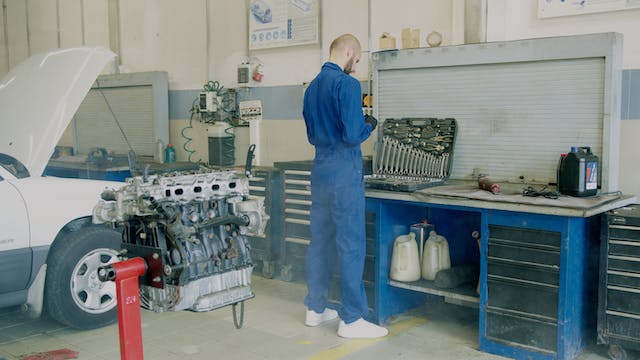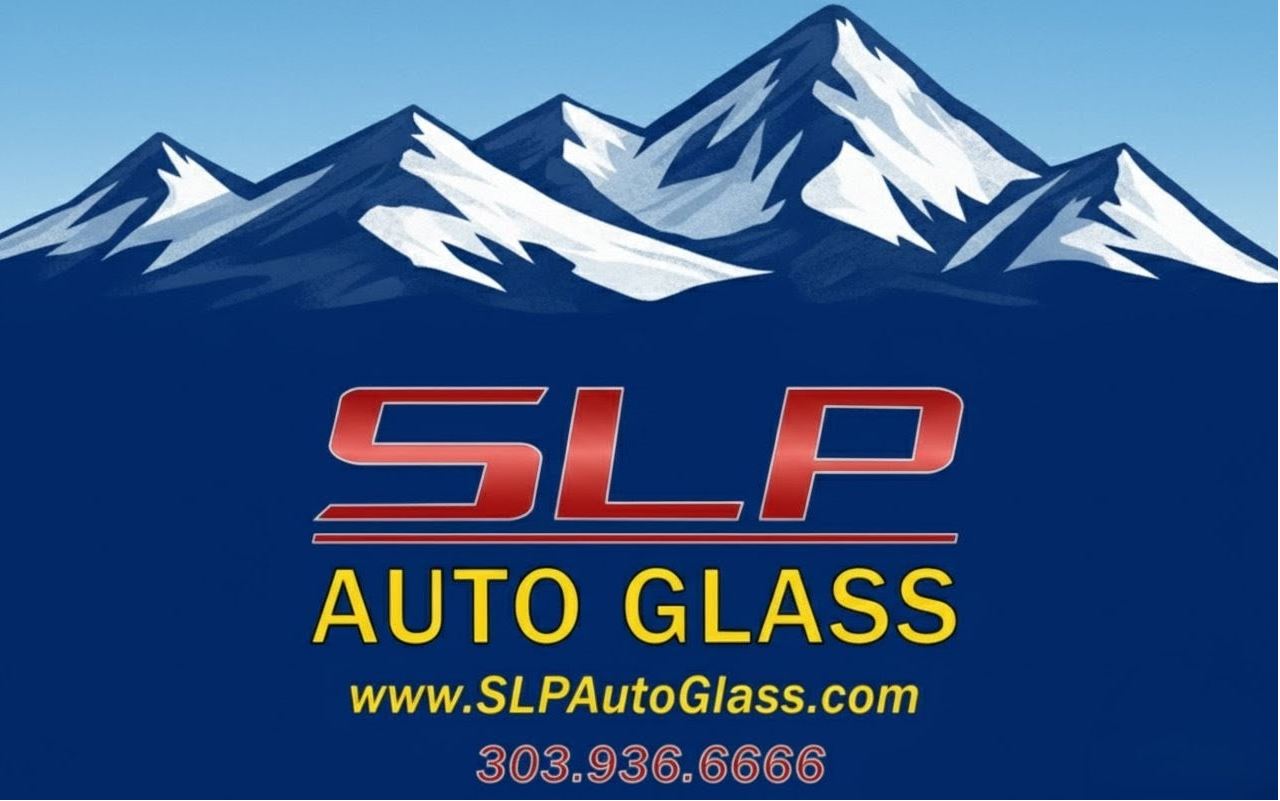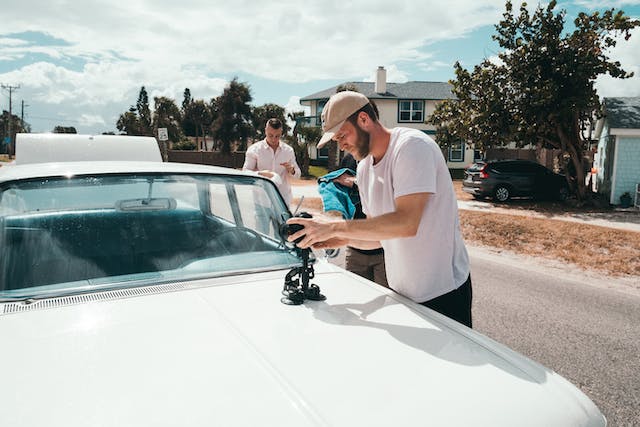DIY AutoGlass Replacement: When Is It Feasible?
Evaluating the Scope for DIY AutoGlass Repair: Determining whether a DIY approach is feasible requires a careful assessment of the damage. Small chips, typically not larger than a quarter, and cracks less than three inches long that do not spiderweb are generally considered manageable for DIY repairs. It’s also important to check if the damage is shallow, only affecting the outer layer of the glass. Deep damages that penetrate through the glass layers usually require professional intervention.
Location of the Damage: DIY repair kits are effective for damages that are not in the driver’s immediate line of sight. Damages located at the edge of the windshield are often beyond the scope of DIY repair, as they can compromise the structural integrity of the windshield and require professional replacement techniques.
Advantages of Opting for DIY in Denver:
- Cost-Effective: DIY kits are significantly cheaper than professional replacements.
- Time-Saving: Immediate repair can prevent the damage from worsening, especially in Denver’s fluctuating weather conditions.
- Skill Building: Learning to perform minor repairs can be a useful skill for car owners.
Required Tools and Skill Level: To embark on a DIY repair, you will need a windshield repair kit, which typically includes a resin, an applicator, and a curing strip. Some kits may also contain a razor blade to remove excess resin. The process demands a clean working area, precision, and patience. Denver residents should be mindful of outdoor conditions, as extreme cold or heat can affect the resin’s curing process.
| Tool | Description |
|---|---|
| Windshield Repair Kit | Includes resin adhesive for filling cracks or chips. |
| Razor Blade | Used to remove excess resin and clean the damaged area. |
| Glass Cleaner | For cleaning the surface without leaving residue. |
| Suction Cup Tool | Stabilizes the windshield during repair. |
| Curing Strip/Film | Covers the resin during curing. |
| UV Light or Sunlight | Necessary to cure the resin. |
| Alcohol Wipes | Cleans the damaged area before applying resin. |
| Safety Glasses | Protects eyes from glass particles or chemicals. |
| Gloves | Protects hands from sharp edges and chemicals. |
| Towel or Cloth | For cleanup and protection of car areas around the repair site. |
| Instruction Manual | For detailed repair instructions and guidance. |
Step-by-Step Guide for DIY AutoGlass Replacement:
- Clean the Damaged Area: Remove any debris from the chip or crack using a razor blade or fine needle.
- Preparing the Applicator: Fit the applicator over the damaged area according to the kit’s instructions, ensuring a tight seal.
- Resin Application: Insert the resin into the applicator, filling the crack or chip. Follow the kit instructions for the amount and method.
- Curing the Resin: Use a UV light or sunlight to cure the resin. This step solidifies the resin, bonding it to the glass.
- Finishing Touches: After the resin has cured, remove any excess with a razor blade and clean the area.
Limitations and Considerations: While DIY repairs can be effective for minor damages, they have limitations. Improper application can lead to poor results, and the repaired area might not be as clear as a professionally repaired or replaced windshield. Additionally, in Denver’s climate, varying temperatures can impact the effectiveness of the repair.
Safety First: Safety should be the top priority. If there’s any doubt about the feasibility of a DIY repair or the extent of the damage, it’s advisable to consult a professional. Inaccurate repairs can compromise the structural integrity of the windshield and, by extension, the safety of the vehicle.
DIY AutoGlass replacement can be a feasible and cost-effective option for Denver residents dealing with minor windshield damages. However, it requires a careful evaluation of the damage, the right tools, and a certain level of skill. When in doubt, or if the damage is significant, professional assistance is always the recommended course of action to ensure safety and quality.
When to Call a Professional for AutoGlass Replacement

Assessing the Damage: Recognizing Professional Help is Needed Professional AutoGlass replacement becomes necessary under certain circumstances:
- Size and Type of Damage: If the chip is larger than a quarter or the crack extends more than three inches, DIY kits may not suffice. Complex cracks, such as those that are spiderwebbing, or deep impacts that penetrate both layers of the glass, require professional intervention.
- Location of Damage: Cracks at the edge of the windshield or in the driver’s line of vision are particularly concerning. These areas affect the structural integrity and safety of the windshield, demanding expert attention.
- Multiple Areas of Damage: Multiple chips or cracks spread across the windshield cannot be effectively handled with DIY methods.
Expertise and Equipment: The Professional Advantage Professionals in the Denver Metro area bring specialized knowledge and tools to the table:
- Technical Expertise: Trained technicians have the skills to handle various types of auto glass damages, ensuring a repair or replacement is done correctly.
- Advanced Tools: Professional AutoGlass services use industry-grade tools and materials that are typically not available in DIY kits. This includes high-quality resins, professional-grade applicators, and proper UV curing tools.
- Safety and Compliance: Professionals ensure that the windshield is installed following safety standards and regulations, which is crucial for both legal compliance and the safety of the vehicle’s occupants.
Convenience and Warranty: Additional Benefits of Professional Services
- Time-Saving: Professional services can complete the replacement efficiently, often offering same-day service, which is particularly convenient for busy Denver residents.
- Warranty and Follow-Up Service: Most professional AutoGlass services provide a warranty on their work. This means if there are any issues post-installation, such as leaks or cracks, they will address them at no additional cost.
- Insurance Liaison: Many AutoGlass replacement services in Denver liaise directly with insurance companies, simplifying the claim process for the vehicle owner.
How to Choose a Professional AutoGlass Service in Denver
When selecting a professional service, consider these factors:
- Experience and Reputation: Look for services with a strong track record and positive customer reviews.
- Certifications: Technicians should be certified, indicating they have been trained in the latest AutoGlass replacement techniques.
- Quality of Materials: Inquire about the type of glass and resin they use. OEM (Original Equipment Manufacturer) quality is typically the best choice.
- Cost and Transparency: A reliable service will provide a clear and upfront cost estimate, without hidden charges.
Understanding the Replacement Process
The professional AutoGlass replacement process usually involves:
- Inspection and Assessment: The technician inspects the damage and decides on the best course of action.
- Removal of Damaged Glass: The damaged windshield is carefully removed to avoid damage to the vehicle.
- Installation of New Glass: A new windshield is installed using industry-grade adhesives and techniques.
- Quality Check and Curing: The technician ensures everything is correctly aligned, and the adhesive is given time to cure properly.
- Final Inspection and Cleaning: A final inspection is conducted, and the windshield is cleaned for clarity and visibility.
Prioritizing Safety and Quality In many cases, opting for professional AutoGlass replacement is the best way to ensure the safety and longevity of your vehicle’s windshield. Denver residents should consider the severity of the damage, the complexity of the repair, and the benefits of professional expertise when deciding on the appropriate course of action for AutoGlass replacement.
Content reviewed and published by SLP AutoGlass Editorial Team.

